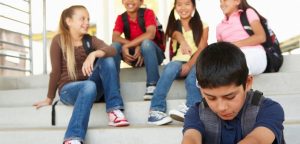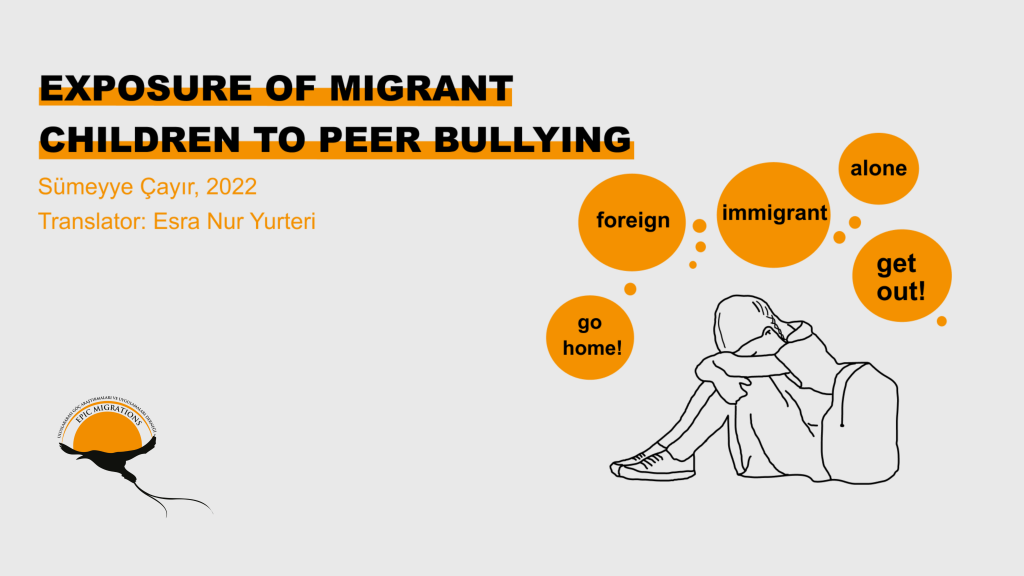Migration is a phenomenon that has existed throughout human history. For various reasons, people left their place of residence voluntarily or compulsory, for short or long-term, went to other places and moved. Turkey is the country hosting the highest number of refugees, with the number of refugees exceeding 3.5 million. According to the statement made by the General Directorate of Migration Management on October 21, 2021, the number of Syrians in Turkey is 3,723,674. Children aged 0-18 make up 1 million 764 thousand 863 (47.4%) of this number.

Although the special rights of migrant children are included in Article 22 of the Convention on the Rights of the Child; Starting from the emphasis of the Convention on the Rights of the Child on general principles and rights groups; There are rights that must be taken into account when developing an approach to the rights of migrant children. These can be considered as: “The principle of the best interests of the child”, “The child’s right to survival, safety and development”, “Children’s right to be protected from all kinds of abuse, violence, neglect and exploitation” and “The right of the child to freely express their views and participate”.
Perhaps the most disadvantaged groups of the migration movement are children. During and after migration, many accompanied or unaccompanied children have to fight some problems such as education deficiencies, peer bullying, child labour, early marriage and the need for protection. Peer bullying may seem like a new problem, but it has gained importance with the increase in research on it recently. Peer bullying refers to as the physical, verbal and behavioral traumatic and harmful behavior of a person or persons in the same age group as children and adolescents towards each other or a single person. However, it is a concept that is way with different dimensions with the increasing migration movement. The main thing for this concept, which can be considered as the reflection of xenophobia among children, is to be different. Your language, skin color, physical appearance, ethnic origin may be sufficient reasons for being exposed to peer bullying.
Bullying starts such as a game or fun, individually or as a group, and can gradually increase in severity. For bullying to occur, it must be repeated and sustained. Refugee children who are bullied think they are worthless and unacceptable and isolate themselves from their environment. The migrant child who is bullied may begin to be absent from their school. They may leave their education unfinished or they may have difficulty in learning and withdraw from the social environment because they feel uneasy at school all the time.

In some researches, it has been determined that children who experience peer bullying experience psychological problems such as depression and anxiety, have high suicidal tendencies and low self-esteem. This situation leads to the emergence of lost generations in terms of migrating children, and to other problems in the context of adaptation to the environment and integration with the society (Such as child labor, being dragged into crime, ganging up, being victim of human trafficking, being a drug addict, being a victim of organ smuggling, neglect-abuse, child marriage, peer bullying)
WHAT CAN BE DONE?
The school acts as a bridge between refugee children and the new society in which they begin to live. The institution that introduces children to the culture they come from, enables them to adapt to the new social life, develops their academic skills, provides social skills and contributes to social emotional development is the school.
Prejudices play a bigpart in the formation of peer bullying. Hate speech, media and local language also exhibit attitudes and behaviors that cause peer bullying.
The attitudes and behaviors of parents towards immigrant children and their families affect their children, so it can be said that it also affects peer bullying in schools. It can be predicted that educators’ attitudes and behaviors can also trigger peer bullying. In this case, the local people and therefore parents and trainers must first be informed with correct information.
It is necessary to provide the necessary psychological support for children who have experienced loss and trauma to be successful in their education life. For this reason, school administrators, teachers, families should be made aware of this issue.
They must combat all forms of bullying and discrimination that refugee children face at school. Providing teachers with Syrian children in their classrooms with special training on how to solve social cohesion problems in their classrooms and support the education of struggling children can help alleviate these problems. Because, in some studies, it is seen that the training given to teachers on these subjects has positive outcomes.
References
Altındaş,M.E.(2018). DKAB Öğretmenlerine Göre Suriyeli Çocukların Devlet Okullarında Karşılaştıkları Sorunlar (Nitel Bir Araştırma).
Gümüş, C. (2016). Akran Zorbalığı Nedir?http://pisikonet.com/Yazilarimiz-akran-zorbaligi-nedir?-244.html Erişim Tarihi: 25.10.2021
https://multeciler.org.tr/turkiyedeki-suriyeli-sayisi/
Kaya, M. (2020). Mülteci ve Göçmen Çocukların Karşılaştığı Sosyal Sorunlar, Uyum ve Entegrasyon. Doktora Tezi, Hacettepe Üniversitesi, 2020.
Köroğlu, S. (2020). Akran Zorbalığının Mülteci Çocuklar Üzerindeki Etkisi, https://multeciler.org.tr/akran-zorbaliginin-multeci-cocuklar-uzerindeki-etkisi/ Erişim tarihi: 25.10.2021
Odman, T. (2008). Çocuk hakları bağlamında çocuk mülteciler. Mersin: Çağ Üniversitesi
Schachner, M. K. (2017). Fromequalityandinclusiontoculturalpluralism– evolutionandeffects of culturaldiversityperspectives in schools. EuropeanJournal of DevelopmentalPsychology, 1- 17.

